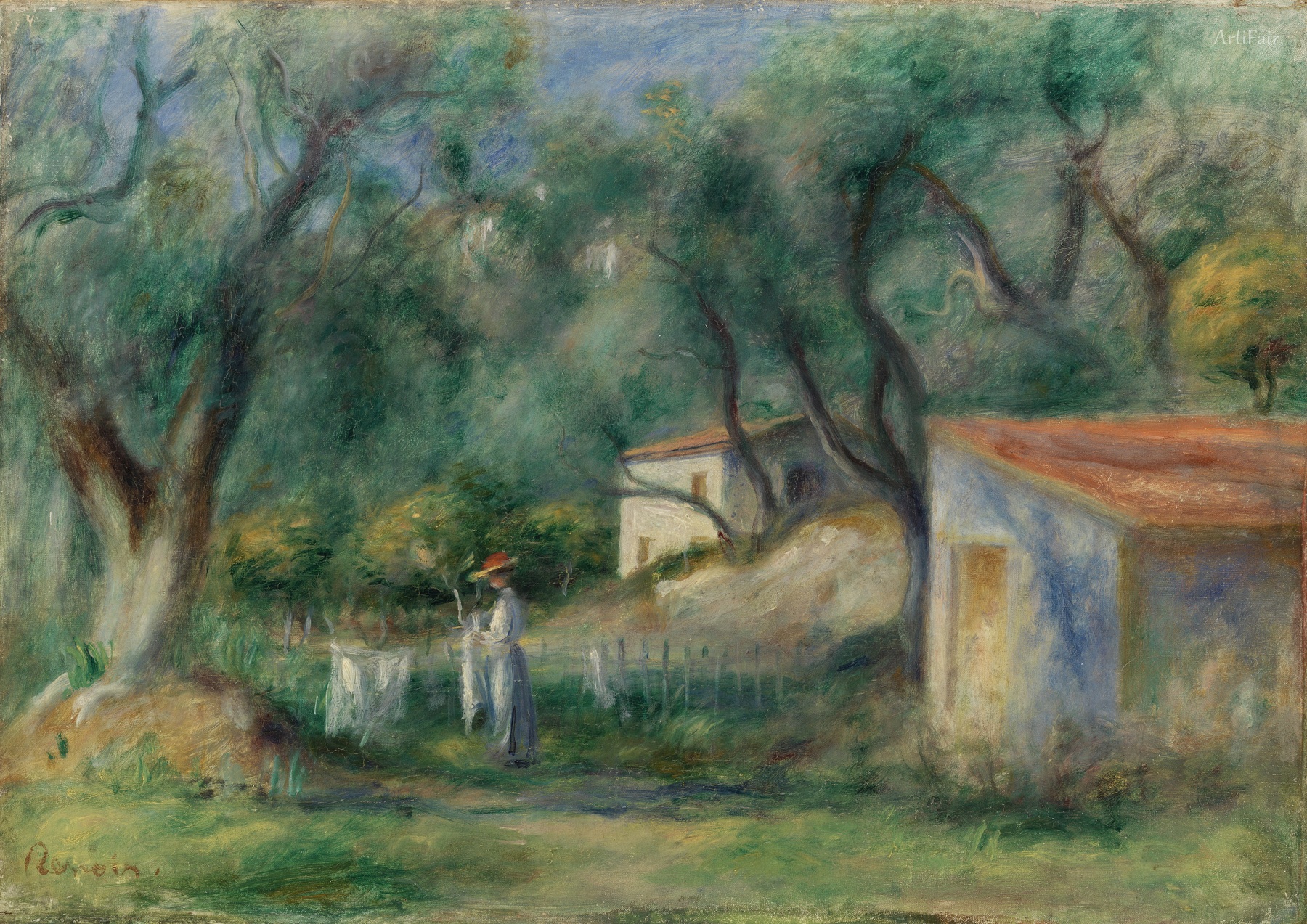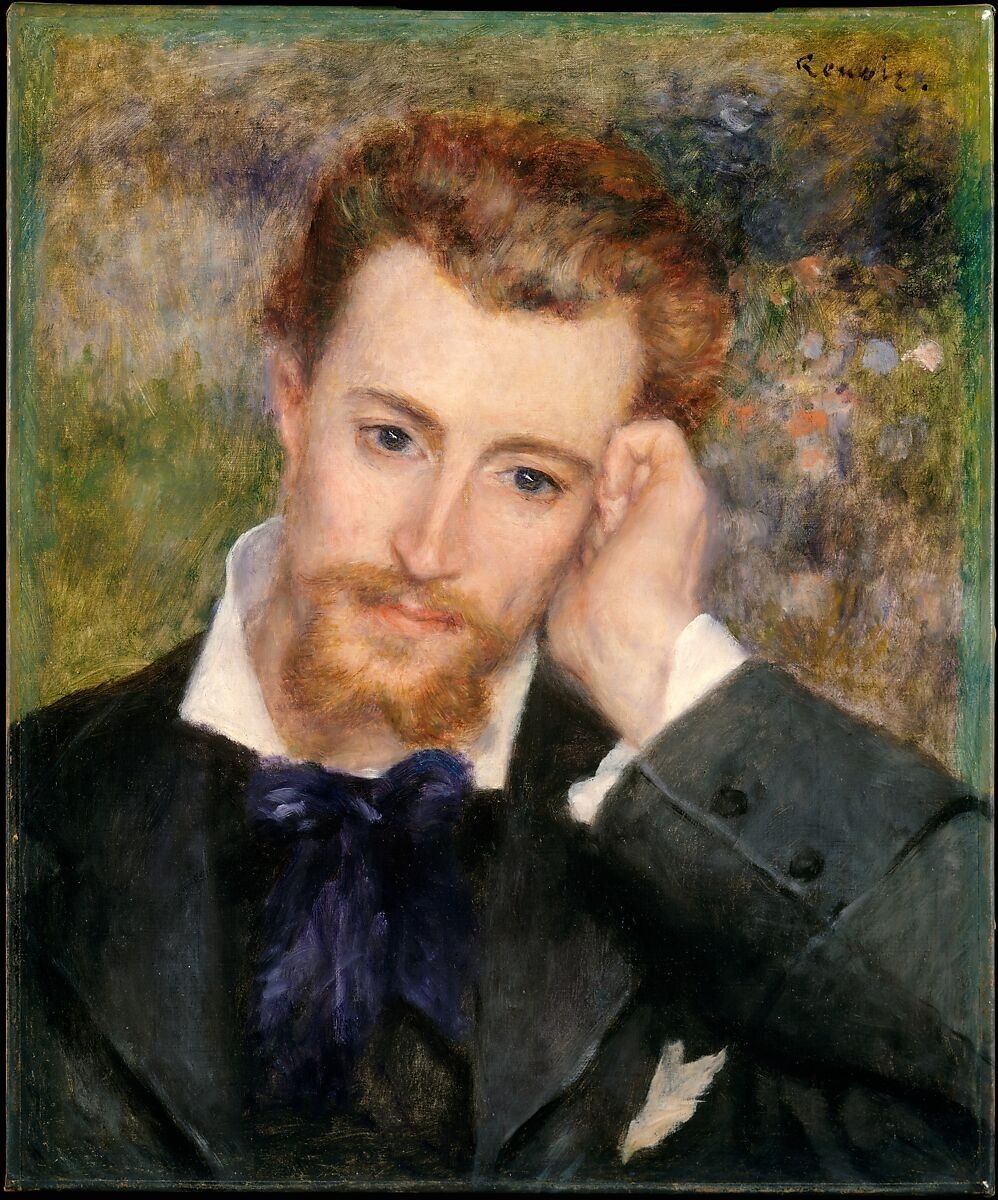

Pierre-Auguste Renoir
FR
459
Artworks
1841 - 1919
Lifespan
Artist Biography
Pierre-Auguste Renoir, born in Limoges, France, in 1841, was a leading figure in the Impressionist movement, renowned for his celebration of beauty and sensuality. The son of a tailor, Renoir's family moved to Paris, where his artistic talents emerged early. At thirteen, he was apprenticed to a porcelain factory, skillfully painting floral designs on china. This early commercial work honed his delicate touch and appreciation for decorative arts. Ambitious and driven, he saved his earnings to pursue formal art education, enrolling in 1862 at the École des Beaux-Arts and joining the studio of the academic painter Charles Gleyre, a decision that would decisively shape his future.
In Gleyre's studio, Renoir formed formative friendships with Claude Monet, Alfred Sisley, and Frédéric Bazille. This group shared a revolutionary desire to break from academic tradition and capture the fleeting realities of modern life. They frequently painted *en plein air* in the Forest of Fontainebleau, experimenting with light and color. A pivotal moment came in the summer of 1869 when Renoir and Monet painted side-by-side at La Grenouillère, a popular riverside resort. There, they developed the core techniques of Impressionism, using short, broken brushstrokes and a vibrant palette to depict the shimmering effects of sunlight on water, forever changing the course of Western art.
Renoir was a principal architect of the first Impressionist exhibition in 1874. While his colleagues often prioritized landscapes, Renoir's work was distinguished by his profound fascination with the human figure, particularly women. His ability to render the luminosity of skin and capture scenes of Parisian leisure with warmth and vitality earned him critical attention and, crucially, patronage. Wealthy patrons like the publisher Georges Charpentier commissioned portraits, providing financial stability. Masterpieces from this era, such as *Dance at Le Moulin de la Galette* (1876) and the magnificent *Luncheon of the Boating Party* (1880–81), immortalized moments of communal joy and are celebrated for their sparkling color and complex, lively compositions.
By the early 1880s, Renoir experienced an artistic crisis, feeling he had exhausted the potential of Impressionism's focus on ephemeral moments. A transformative journey to Italy, where he studied the works of Raphael and the Renaissance masters, inspired him to seek a more durable, structured art. This led to his so-called "Ingres period," where he integrated classical discipline into his modern vision. He began to emphasize clear outlines, solid forms, and smoother modeling, creating a style that was more linear and formal. Works like *The Umbrellas* (c. 1881–86) and his series of monumental bathers exemplify this shift, as he sought to fuse the vibrant light of Impressionism with the timeless solidity of classical art.
In his later years, Renoir achieved a masterful synthesis of his artistic explorations. He softened the harsh lines of his Ingres period, blending the rich colorism of Titian and Rubens with his innate Impressionist sensibility. Plagued by severe rheumatoid arthritis, he moved to the warmer climate of Cagnes-sur-Mer in 1907. Despite being confined to a wheelchair and suffering from deformed hands, his artistic spirit remained indomitable. He continued to paint prolifically, sometimes with a brush strapped to his wrist, producing works of profound sensuality and warmth. His subjects became more intimate, focusing on his family, nudes, and the lush landscapes around him. He also collaborated with the sculptor Richard Guino to translate his painterly vision into three dimensions.
Renoir passed away in 1919, just months after achieving the profound honor of seeing his paintings hung in the Louvre alongside the Old Masters he revered. His legacy is that of a complex and constantly evolving artist. He was not only a founder of Impressionism but also one of its first critics, pushing his art toward a modern classicism that would deeply influence 20th-century titans like Pablo Picasso and Henri Matisse. Today, Renoir is celebrated worldwide for his radiant canvases that embody the sheer pleasure of life and an unwavering devotion to beauty.